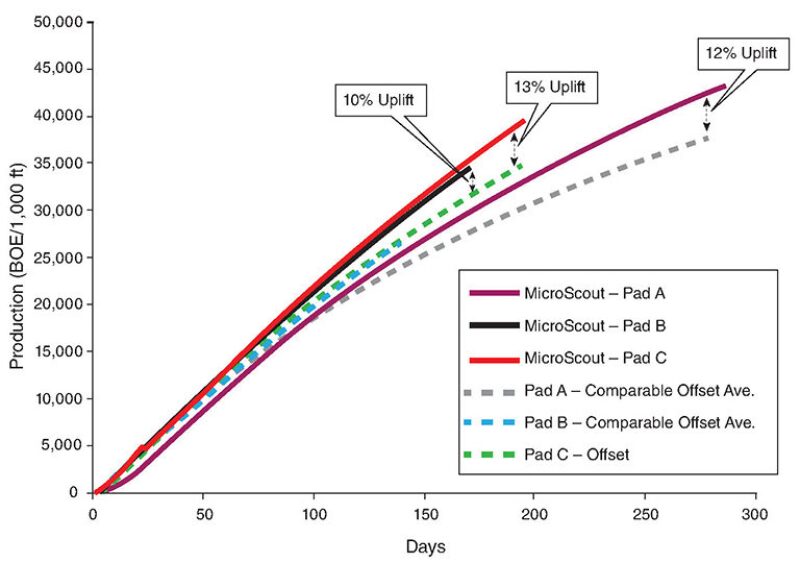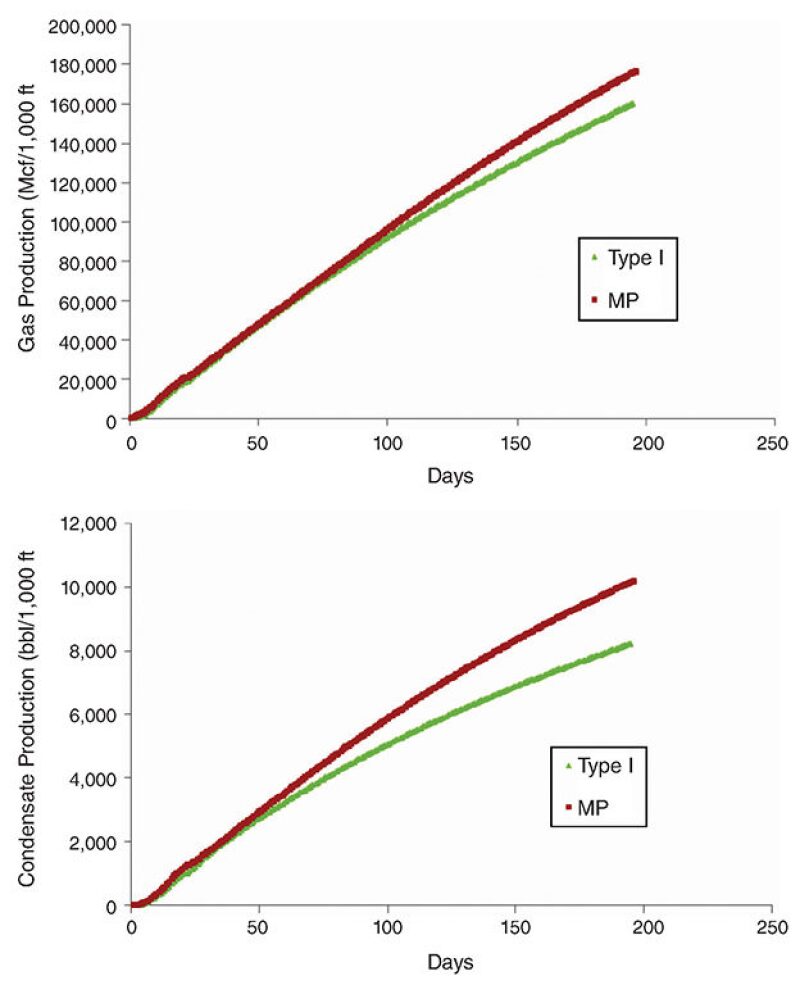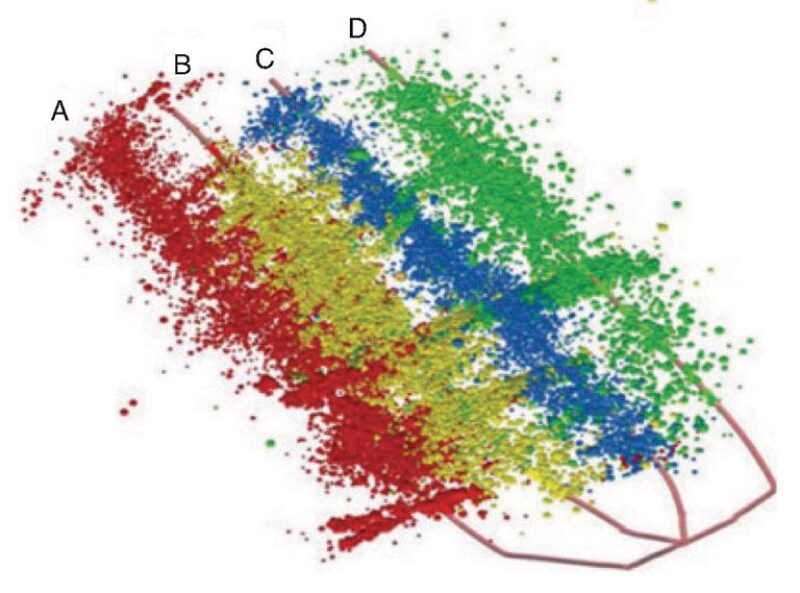The challenge of selling microproppant was obvious when the first question asked after a recent presentation was: “I thought 100 mesh [fine proppant] was dust. So what is microproppant?”
Rather than repeat the explanation in his talk, the speaker James Calvin, a technical sales advisor at Halliburton, responded, “It is even finer.”
The exchange drew a laugh from the audience at this year’s SPE Hydraulic Fracturing Technology Conference and Exhibition in January, which had heard him explain that proppant that is a fraction of the size of the smallest now used—about 300 mesh—may be able to significantly increase production by holding open fractures that cannot be reached by widely used grains of sand or ceramic.
The question suggests that it is still hard for experts in this field to conceive of how particles whose size is typically measured in microns could offer meaningful benefits. And even among those who see value, there are conflicting theories about what it does in the ground.
At this stage the only company reporting results is Halliburton, which pumps microproppant as part of its MicroScout service. “Field results for MicroScout have shown a positive uplift of production in most of the wells that we have field trialed,” said Philip Nguyen, the chief technical advisor for Halliburton’s production enhancement line. “To be frank, there are lots of unknowns with the application of microproppant as we are only beginning to scratch the surface of using this material in shales.”
That paper (SPE 184863) and others from Halliburton dating back to 2015 offer examples of wells with double-digit production gains when a relatively small volume of these particles are pumped early in each stage, and can reduce the treating pressure required while pumping a job.
“We have seen about a 15% uplift in production over 12-month time frame,” said Mark Parker, technology manager for the Mid-Continent area at Halliburton, which includes the South Central Oklahoma Oil Province (SCOOP) in Oklahoma, where it has been used on nearly 20 wells.
In the Permian Basin, gains have ranged from 15% to 30% where this has been pumped during the early part of each stage. “Theoretically, you are getting secondary fractures [propped] and getting added flow from reservoir to the well,” said Dean Prather, area technology manager for Halliburton’s production enhancement business line.
In a sense this is the logical next step. Over time operators have slowly embraced the idea that using higher percentages of 100-mesh sand to prop early in the job can open smaller fractures and reduce the required pressure needed to treat stages.

Calvin described the production gain by saying: “We placed it in the secondary fracture network and it can go where 100 mesh cannot go. It can keep the secondary fracture network open through production and help minimize the production loss.”
When cumulative production is charted between wells with equal amounts of conventional proppant use, the ones with microproppant added show little gains at first, with a widening advantage as they reach the 1-year mark.
Mesh to Microns
Microproppant pushes into unfamiliar territory for those used to measuring grain sizes based on the number of holes per linear inch in the mesh of a sieve used to sort particles by their maximum size.
Bill Strobel, market manager for Zeeospheres Ceramics, which has sold its micron-scale ceramic balls to Halliburton, said that when it comes to describing the diameter of the spheres, “the people we are talking to do not refer to it in mesh size.”
It also does not fit neatly into the current industry focus on maximizing early production as the testing suggests that the benefits of microproppant become apparent later in the life of a well.
Slower production declines could be a sign that these ultrafine grains are creating a larger productive network by holding open fractures that otherwise would have closed after pumping.
The rapid decline rate common in unconventional formations is typical of production from a limited area of wider, propped fractures near the wellbore, said Mukul Sharma, a petroleum engineering professor at the University of Texas, who is looking for ways to produce from more of the fractured reservoir.
With industry backing, Sharma has written a series of technical papers on unlocking the potential of induced fractures—secondary fractures opened but not propped—which he estimated as roughly 90% of the volume of the fracture network, based on an analysis of where the injected fluid goes during fracturing.
“The surface area of induced, unpropped fractures can be at least an order of magnitude more than that of the main propped fracture,” according to a paper by Sharma (SPE 174946). “This implies that if it is possible to keep these fractures open by some means we may be able to achieve a significant increase in well productivity.”
Ultrafine Proppant
Ultrafine proppant is not a new idea. Fracturing consultants and suppliers have seen signs of companies trying really fine-grain proppant before.
“Microproppant [research] has been around and people have been chasing it,” said Tim Leshchyshyn, who heads FracKnowledge, a data and consulting firm. “The big limit has been the availability of it.”
Conventional fracture sand has been a high-volume, low-cost product, where the smallest grains available have been 100 mesh. Oilfield ceramics makers have focused on making the larger grains for use in areas with the highest flow where reward for using premium proppant is greater. Because making smaller ceramic grains costs more, sand has an even wider cost advantage. Ultrafine ceramic and sand particles, though, are mass produced for use in paint and industrial coatings that resist abrasion and corrosion.

That has been the primary business of Zeeospheres’ corporate parent, Valentine Chemicals. The private company based south of New Orleans bought the ball-making process from 3M Energy and Advanced Materials in 2009. The company has been looking for an innovative way to get into the proppant business. Its biggest inroad has been selling microproppant to Halliburton.
Hugh Caffery, president of Valentine Chemicals, said Halliburton is a critical customer because it has the resources and connections to validate and sell a new technology. But as for how the company’s product has been used, “We do not know where they have used it in operations other than where they published in an SPE paper.”
One hopeful sign was a comment during a Halliburton investor conference call mentioning its service using microproppant in completions.
“After we first induce fractures, MicroScout allows us to better connect these fractures within the formation and prop them open,” said Jeff Miller, president and chief health, safety, and environment officer at Halliburton. “This has been a very successful product, but not one that you ship in a box.”
Operators have not published technical papers on this topic, and suppliers can only guess what happens to orders that seem destined for microproppant testing.
Christopher LeBlanc, general sales manager for national accounts in Unimin’s US unit, said the company has long supplied ground grains of sand, known in the oil industry as silica flour, with particles no bigger than 200 mesh or 300 mesh. Customers have used it as an additive for cement in high-temperature wells.
As for microproppant, what he knows he heard during a presentation at the SPE Hydraulic Fracturing Technology Conference. Testing silica flour using the API standard crush test for sand grains is tricky, because it measures when sand grains break up under pressure. The milling used to turn sand into flour has already done that.
Zeeospheres’ proppant is a regular shape that when crush-tested can stand up to pressures of 60,000 psi or more, Caffery said, which is far higher than the stress likely in even a high-stress well. Crush resistance matters in proppant because the pressure exerted in a reservoir can break up weaker grains of sand or ceramic into fine particles that can block the flow.
Neither side is talking about the likely price-per-ton for a line of business that does not exist. But both point out they are now able to sell for competitive prices to coatings makers that have multiple options to choose from.
Based on past uses, the amount of microproppant required is relatively low—tens of thousands of pounds vs. millions of pounds for conventional proppant—so the price per pound is not as significant as it would be for the conventional sizes that are still required.
Getting In
Microproppant grains are so small they can get in tight fractures in large enough volumes to prop them open, said Carl Montgomery, a fracturing consultant for NSI Technologies advising Zeeospheres. Ultrafine proppant can also remain suspended in widely used, less-viscous slickwater mixtures, allowing it to move around corners where large grains would likely settle out.
But it is not likely to work in every formation. Montgomery said a critical variable is the clay content. Too much clay (which swells when exposed to fracturing fluids) and the proppant will be embedded in the rock rather than serving as a pillar. The ideal reservoir rock has high quartz and carbonate content.
Halliburton’s technical papers have not discussed the effect of varying levels of clay content, or specified the rock conditions in which it is likely to become embedded. But it has done laboratory testing to see the grains perform inside a thin fracture created by splitting a core sample in half and subjecting it to the pressure likely in a reservoir.
A paper by Weiwei Wu of the University of Texas at Austin presented at the fracturing conference (SPE 184858) found that adding proppant within an extremely tight fracture, where clay softening was an issue, still maintained significant conductivity.
Laboratory tests of preserved samples from the Eagle Ford and Utica shales with high clay-content levels (40%) were sawed in two to simulate a narrow secondary fracture under reservoir pressure. The paper reported that the conductivity dropped by 88%–98% when 5,000 psi in stress was added. There was only a 40% conductivity loss when 1 lb/ft2 of proppant was placed inside. The size of the proppant used was not specified.
If microproppant works in these extremely tight spaces, the percentage gains could be huge compared with the otherwise negligible flow, Montgomery said.
“Any proppant is better than no proppant material,” said Montgomery, adding that based on tests of the conductivity in fractures propped with the ultrafine ceramic grains, “despite its size it provides fairly good conductivity when compared to the natural flow capacity of the secondary fracture system.”

The Halliburton paper says the amount of material used is small—about 0.1 lb of material per gallon of fluid propped during the first stage of pumping, known as the pad stage, when roughly one-third of the fluid is pumped to initiate fracturing.
One positive for microproppant is that it can been be added without significant changes in established routines. A mix of ultrafine-grained proppant and water is added by Halliburton during the pad stage. Adding the ultrafine proppant, which is mixed with water for delivery, is “like running another liquid additive on the fly,” Parker said.
Explanations Needed
It is easy enough to visualize microproppant doing in small spaces what conventional proppant does in larger ones.
But the questioning after the fracturing conference talk got skeptical after Halliburton reported that pumping microproppant early on reduced the treating pressure required to place all the proppant in stages where there is a risk of coming up short. That was first reported in a 2015 paper covering a field test in the Barnett shale for Devon (SPE 174060).
“It led to something we didn’t expect. There was a reduction in near-wellbore pressure” during fracturing due to a reduction caused by pressure-dependent leakoff, Prather said.
Leakoff occurs when the pressure in the primary fracture rises high enough to open up the secondary fractures, said Montgomery. As a result, “as they pump more, these secondary fractures take more fluid.”
The symptoms of the condition, diagnosed using pressure trend charts, is significantly higher treating pressure and fracture networks that do not take the planned amount of sand, leading to screenouts.
As for why pumping ultrafine sand alleviates that problem, Calvin said it appears the microproppant in the secondary fractures is limiting access to them, like a diverter, focusing the pressure on the main fracture, but still allowing enough permeability for production later.
When Calvin offered that explanation, it led to questions. One of those was from Montgomery, who said that limiting flow into secondary fractures “would increase the pressure, not decrease it,” and suggested some other factor, such as the polymer used to transport the proppant, could explain it.

Others theories offered for the reduced pressure: the abrasive high-pressure flow might expand constricted places and smooth sharp turns, or early propping in secondary fractures may also alter the pressure trend when conventional proppant is pumped later.
That lively question-and-answer session on the last day of the conference is a rare example of public conversations about microproppant.
But there are quiet signs of interest. Zillur Rahim, a supervisor in the technical study unit of Saudi Aramco’s gas reservoir management department, said the company was beginning to evaluate whether microproppant could be useful in the hard rock of its formations. But quick change is not likely.
“This is a change of philosophy. It is hard to get anyone to do anything different,” Parker said. Rapid drilling and completions are based on complex routines that companies are reluctant to change, but he added, “Some operators are now looking at it seriously.”
For Further Reading
SPE 184863 Enhancement of Well Production in the SCOOP Woodford Shale Through the Application of Microproppant by James Calvin, Bill Grieser, and Travis Bachman, Halliburton.
SPE 174060 Application of Micro-Proppant To Enhance Well Production in Unconventional Reservoirs: Laboratory and Field Results by Jeff Dahl, Devon Energy; Philip Nguyen, Ron Dusterhoft et al., Halliburton.
SPE 184858 An Experimental Investigation of the Conductivity of Unpropped Fractures in Shales by Weiwei Wu, Mukul Sharma et al., The University of Texas at Austin.
SPE 174946 The Role of Induced Un-propped (IU) Fractures in Unconventional Oil and Gas Wells by Mukul Sharma and R. Manchanda, The University of Texas at Austin.


